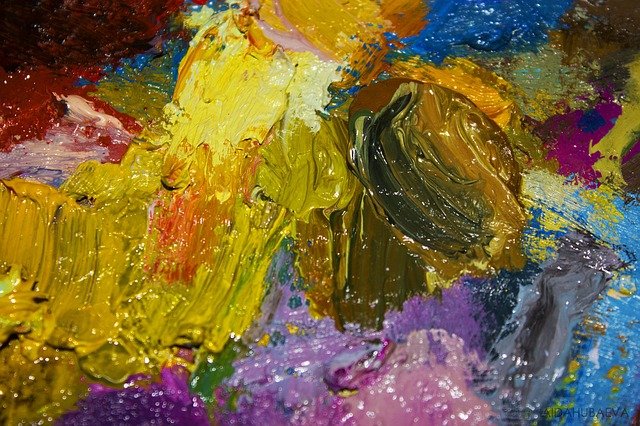
Graphic Artist vs. Graphic Designer

Have you ever wondered – how are graphic designers and graphic artists any different? They almost sound the same, don’t they?
Well, most of us usually get confused between a graphic artist and a graphic designer. And that’s because not many of us are well-informed about these jobs. But, as you must know, the commercial art industry is quite versatile, and calls for numerous different roles and responsibilities.
So, if you’re an aspiring artist or designer, it’s imperative that you acknowledge the fundamental difference, so that you don’t end up choosing a wrong career path.
On that note, we’ll be exploring the graphic artist vs. graphic designer debate today, so let’s get going!
The root behind this confusion
There is no other thing that is as harmful as half-knowledge. On that note, before trying to perceive the difference between artists and designers, you have to ask yourself – what is digital design?
Now, as this term has been popping recently, different folks are beginning to interpret its meaning in distinctive ways. But, in the end, digital design only refers to art that is established on a virtual host platform for viewing purposes.

Moving towards the root of this significant misunderstanding; yes, the graphic artists and graphic designers do have a thing or two in common. First of all, both share a common dependence on digital software to execute their tasks. Also, both of their works are associated with the digital as well as print formats, so it’s natural to get confused.
Last but not least, who can forget the common misunderstanding caused by the term “graphic” in both the names? It’s almost like comparing air force and air hostess, just because both of these roles begin with the term “air”!
So, let’s get deep into the differences between a graphic artist and a graphic designer, shall we?
Who is a graphic artist?
Breaking it down in layman terms, a graphic artist is someone who is only responsible for developing the visuals that convey a specific message.
Now, it’s not necessary for every piece of art to have a story or a message, as frequently the graphic artists also create visuals only for the aesthetic pleasure. In that sense, at times you may not find any logic behind a flashy visual. On the other hand, sometimes only a subtle visual will be enough to narrate an entire story.
Now, if you want to understand the layers of a graphic artist even better, you’ll have to take a quick peek at the portfolio of a graphic illustrator. You’ll mostly find that these contain an abundance of cartoons, comics, graphic novels, and similar illustrations.
As you can see, none of these art mediums are confined by rules and regulations of designing. Similarly, a graphic artist is always open to twist and bend the rules of designing, as they are only concerned with adhering to the theme/subject matter.
The objective of a graphic artist
One can say that the graphic artist is more of an expressionist who brings new ideas to the table and sets a mood. Their abstract way of expression enables them to be the messenger that conveys the message to the recipient without using a lot of words. This way, the audience needs to have a far more profound understanding to resonate with the thoughts and emotions reflected by the art.
For instance, suppose that you are nervous about appearing for your driving test. You’re sitting in the license registration office, while you suddenly come across a funny graphic art. The art consists of a silly police cartoon conveying a message about safe driving, which puts a smile on your face.
Well, it’s instances like these where we experience the work of a graphic artist. So, it can also be said that the objective of a graphic artist is also to entertain the viewers.
Traits of a graphic artist
Being the right-brained thinkers, it’s pertinent for the graphic artists to be a lot more creative than others in the team. Furthermore, being highly subjective is a common trait found amongst graphic artists. Well, why not? Their entire work revolves around specific subject matters. They are also found to be intuitive and stand out to be free thinkers. This is how they are often found to bend the rules of graphic illustration to comply with the principal theme.
Who is a graphic designer?
Here comes the exciting part – a graphic designer is the exact opposite of a graphic artist. Just go through graphic design for dummies manual, you’ll be astounded to find out how graphic designing is more about strategic planning than creative thinking.

Why so? Mainly because graphic designing has become more about business and marketing than art. Please don’t get confused; it’s still about art. Although, it refers to the art that’s strategically designed to resolve the communication barriers amidst the brand and their key customers. So, a graphic designer mainly focuses on enabling the viewers to interact with the graphic illustration. The higher the interactivity, the more the content reaches its targeted audience.
In this digital generation, the content has the throne. A graphic designer exploits this idea to optimize specific information, mainly related to businesses, on the major platforms. Once you look into a graphic designer’s portfolio, you’ll find interactive digital designs, web designs, organization logos, and so on.
Speaking of this, one major point you should know is that it’s not fundamentally required for a graphic designer to excel at sketching. Their principal objective is to understand how to solve a particular problem by engaging with the audience, using the factors that trigger their sentiments. The triggers can be colors, slogans, logos, and more, which the targeted demographic relates to immensely.
The objective of a graphic designer
The purpose of a graphic designer is to make the marketing/promotional content as eye-catching as possible. Now, if the commercial art industry were set in the Star Wars universe, the graphic designers are the Jedis. Why so? Because they are continually using science and logic to strategize ways to engage the viewers with the content as much as possible, sort of like the Jedi mind tricks!
When it comes to a graphic designer, the audience is instantly classified into specific demographics with varieties of taste. Now, it is impossible to reach every single demographic with the same content. That’s why a graphic designer is more familiar with the sort of colors, fonts, or styles that can be useful in making the content as appropriate as possible.
They use all of this information to create the most interactive content that is guaranteed to make the audience scroll to the end. This type of content mostly contains the solution to specific problems, and once the viewers have consumed the message entirely, they spread it on their own.
For instance, if the graphic designer were supposed to promote a wedding dress brand among a millennial American demographic, they would use the color white as it represents marriage in our culture.
Traits of a graphic designer
A graphic designer is usually a left-brained thinker, and they’re commonly found to be somewhat objective than subjective. Furthermore, they are best known to prioritize analytical thinking rather than creative thinking.
And as mentioned earlier, strategic planning and problem-solving skills are the most common traits found amongst graphic designers. Their art triggers action rather than mood, as they prefer to communicate with logic while keeping feelings aside, so there’s that.
Exploring the duality
Nobody can deny the vast differences that arose in this graphic artist vs. graphic designer debate, but it doesn’t mean that they are entirely incompatible. Despite working in two of the most extreme dimensions of this industry, these two can create magic together, just like wine and cheese.

However, you have to make sure that you’re maintaining the balance between logic and free-thinking. Once you can infuse science and creativity at the same time in the right proportion, you can engage the audience proactively to raise awareness while also affecting their emotions. So, yes, these two are not the same but are capable of creating a strong partnership.
Conclusion
We hope that we could help you understand the difference between a graphic artist and a graphic designer a little better. Did we miss out on anything? Or do you believe that there may be some essential points that you’d like to add to this debate?
Do not hesitate to communicate with us in the comment section below. Also, let us know what you would like us to write about, and we might bring it to the table the next time!
On that note, we’ll see you soon with similar guides.
Till then, stay tuned!








